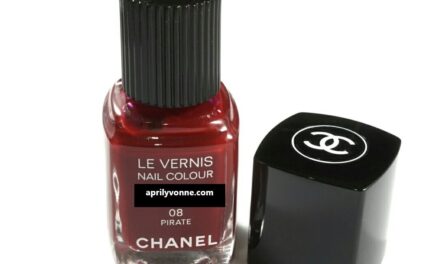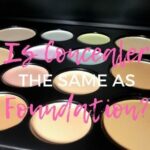Introduction
Do you ever entertain the thought of having your own makeup line? Maybe you have dreamt of a range that reflects your belief in beauty or a niche you observed in the market that lacks proper filling. Anyone interested in beauty, aspiring businesswomen, and professional makeup artists who want to create their own cosmetic line gets thrilled about it. The makeup industry in the modern world has never been as active as it is today with numerous opportunities for inspiring and evolving both artistic and commercial initiatives. It’s time to arrange a set of recommendations that would help turn the idea of creating your makeup line into a reality.
Exploring the Lively World of Makeup
Makeup as a business sector is a promising area with numerous trends, creativity, and potential at the moment. Everything, right from the lipsticks to the foundations that one sees is varied and the same is the case with the consumers and their requirements. Establishing a makeup line you can be one of those like-minded individuals who result in diversifying this exciting space. But where do you start? The essence of the matter is to know the rhythm of the industry, determine its members, and define your place in it.
Why Branding is Your Secret Weapon
Brand management is not about an icon or a slogan; they are the essence of a business. That is what makes the difference and gives a unique signal to the consumers in case of makeup line choosing. In other words, brand equity has far-reaching value since it engenders emotional even loyalty among customers. Think about modern successful brands; brands that revolutionized the beauty industry with products that for so long have not been represented, like Fenty Beauty, or brands that created an entire population that feels seen and understood like Glossier brand. Your brand values and mission must be well articulated, exciting and must be communicated cohesively across different platforms.
Setting the Stage for Success
Launched a makeup line is an amazing idea that requires creativity in terms of design and marketing, and a lot of effort. This can be identified through market research that would involve finding out more about the desires in the market, in order to gain an opportunity for differentiation. It involves benchmarking your rivals and identifying emerging opportunities and gaps in customers’ needs that should be filled. It provides you a firm ground to start your makeup line as you are led by a good plan and a clear brand.
1. Market Research
Knowing Your Audience Inside Out
It is important for a business to know its consumers in order to align its products and promotional activities. Who are they? Who are they, why do they buy, when and how often do they purchase, and what do they do between their purchases? For instance, millennial consumers and Gen Z may be interested in sustainability clean aesthetic product packaging, and quality, while baby boomers and even the silent generation may be concerned with products that can successfully address aging concerns. Carry out questionnaires, interviews, and discussion groups in order to get more information as well as modify your products.
Learning from the Competition
Competitive reference offers an understanding of the existing solution space, and what is effective and what is ineffective. Identify the makeup brands that are currently trending and analyze a select line of products, the prices set for the products, the advertisements and promotions placed by brands, and customers’ feedback. Begin to assess their performance with special consideration of their achievements and their weaknesses. Doing this exercise will assist you in identifying areas of branding to offer unique value to its target market.
Spotting Trends and Filling Gaps
Beauty care is dynamic in a way that year in and year out, new deals come up, new styles appear, and new brands are introduced. To find the current and emerging trends, follow the industry magazines, social profiles, and content creators’ posts. From the development of vegan cosmetics to the importance of getting your hands on more products that have different uses – these are trends that can tell you about the peculiarities of creating a successful product.
2. Conceptualization and Branding
Crafting a Memorable Brand Identity
The brand image includes the logos, colors, font typefaces, and overall visual themes that define the branding. This should resonate with what your brand stands for while at the same time appealing to customers. It will be advisable to talk to a graphic designer who would help in ensuring that the package design is consistent with the company’s branding, which would further help in making the brands pop off the shelves and websites.
Bringing Your Product Concept to Life
Determine which lines of cosmetics and toiletries to introduce – lipsticks, eyeshadows, foundations, and so on – and state your company’s USP. How are your products different? In many cases, it could be a new product formula, a fresh approach to applying the products, or a promise to the environment. The USP should be compatible with the organization’s values and should appeal to the target market.
Designing Thoughtful Packaging
The packaging is typically the first thing that a client comes into contact with when engaging your brand thus it must count. It should look good, work well, and should reflect the company or the business that is using it. The elements include usability, mobility, and sustainability when it comes to packaging design. Hire a packaging designer because the appearance of the packaging is as important as the packaging benefits.
3. Product Development
Choosing the Right Formulation Path
Coming up with your formulations is one of the important aspects of manufacturing makeup products. You have two main options: The services include custom formulations or private labeling. Custom beverages enable you to come up with new products that meet the requirements of the market while privately labeled products require the use of recipes that have already been prepared.
Collaborating with Experienced Chemists
By collaborating with cosmetic chemists, it is very possible that your products will be of the best quality, safe, and very effective. Your formulators can assist with optimization, recommend additives, or do stability testing for you. Hire skilled providers who have worked in the beauty industry and who have launched products in the past.
Ensuring Rigorous Testing and Certification
You need to have tests as a way of ascertaining that your products are safe to use, effective in their use, and as per the expectations of the customers. Perform dermatological and allergen tests on their products and strive for ‘cruelty-free,’ ‘vegan,’ or ‘organic’ certification, where possible. Obtaining these certifications can be an important way to strengthen your brand proposal and conquer aware consumers.
4. Sourcing and Manufacturing
Finding Reliable Suppliers and Ingredients
Secure the availability of quality raw materials and foodstuffs from the right producers and vendors. Analyzing factors such as geographic origin of the ingredients, sustainability, and cost. It is critical for guaranteeing a dependable supply chain and negotiating better supply conditions in terms of building strong relations with suppliers you work with.
Deciding Between In-House and Outsourced Manufacturing
Creating strong links with your suppliers is essential in order to keep a reliable supply chain and achieve more favorable supply agreements. Manufacturing internally has certain advantages because there is more control over the entire process; but at the same time, it involves a large capital outlay and one has to develop adequate machinery. Outsourcing most of the time is more elastic and can bring your attention to other facets of your company.
Implementing Robust Quality Control Measures
Of the manufacturing strategies, there is the concept of internal manufacturing Where the organization performs the manufacturing process itself, or external manufacturing where the process is outsourced to manufacturing contractors. This encompasses; inspection, testing by batches, and compliance with the standard portraying quality. Quality assurance guarantees that the products meet the specified standard and hence customers’ expectations eliminating the chances of recall which is very expensive.
5. Legal and Regulatory Considerations
Navigating Business Licenses and Permits
Before starting a makeup line, permits and licenses that are needed to conduct business must be acquired. Again, these depend on the region and may comprise business licenses, sales tax resale permits as well as health department licenses. Study the specifications within your state to establish conformity.
Understanding and Complying with FDA Regulations
In the United States particularly Food and Drug Administration has the responsibility of regulating cosmetics. Used guidelines for labeling, safety, and advertisement to help you steer clear of legal troubles. Compliance with these regulations protects your brand as well as the consumers making improvement in their confidence to buy the products.
Protecting Your Brand with Trademarks and Patents
Ensure your idea is protected by applying for trademarks and patents to avoid cases of persons copying your brands. An example of intellectual property rights that you can apply to your business for protection is the trademark to protect business names, logos, mottos, and slogans, and patents that can protect special formulations or packaging. SHIELD affords legal protection for the proprietor from uncensored use of brand assets.
6. Marketing and Distribution
Crafting a Comprehensive Marketing Strategy
Establish your brand’s promotional mixture by integrating Web marketing, partnerships with influencers, and conventional media advertising. Use content marketing and optimization, SEO, and email distribution as the major ways to address the audience. Ensure that your anxieties address your brands’ special attributes so that you can easily MN.
Building an Effective E-Commerce and Retail Presence
Offer your products through your own and affiliated web stores, retail stores, and e-marketplaces. Make sure that your e-commerce site is easy to navigate and well laid out with particular emphasis on mobile devices. Work with other compatible retailers in order to penetrate more markets.
Harnessing the Power of Social Media
It is important to use social networks such as Instagram or TikTok, YouTube, and all the rest that allow using brand promotion. Post good content, reach out to other content creators in the beauty niche, and engage your audience. Social media assists in creating brand recall and creating customer relations with the intended brand.
7. Launching Your Makeup Line
Creating Buzz with a Pre-Launch Campaign
Create a pre-launch buzz to create people’s expectations of your product. Employ teasers, exclusive previews, and samples as the best way to attract your audience. Optimize the opportunity to get customers to sign up for the company’s email for early access to a link to the site and other special deals.
Organizing an Impactful Launch Event
Have a launch event with your products ranged to enable you to have direct interaction with the consumers. It can easily be an online conference or live meeting, or a hybrid of both online and a physical meeting. Encounter attendees with presentations of products, question and answer sessions, and raffles.
Maintaining Momentum with Post-Launch Strategies
However, this is not the end of the marketing process but the beginning; therefore, continue with marketing after the launch. Introducing new products into the market, creating special offers, and broadcasting to clients and fans over the internet. Continuously feeding your website and social media platforms with new content and new articles on the company.
8. Scaling and Expanding
Expanding Your Product Line
Another element that customers often have an interest in is additionally related to the presentation of new products or modifications to existing ones in the lineup. Think of booster products put forth during different seasons, in collaborations with other brands or companies, or as part of the product’s line item that is released for a limited time only.
Exploring New Markets and Audiences
Think about the new target markets or possibly taking your brand global. Look for market trends and adjust your products and marketing methods in line with the trends you find out.
Forming Strategic Partnerships and Collaborations
Engage with other brands, personalities, or artists so as to gain exposure and authority. Affiliates can also help you reach out to new audiences and scandalize your brand.
Conclusion
Establishing a new makeup brand is a thrilling and onerous process, and it is wise to be prepared and elemental for every step. By following these guidelines, you will be ready for the work and become successful in the beauty business. Remember, every makeup line that is successful started as a single idea, and a person willing to make it come true.
If you are willing to go to the next level start your research, brand yourself, and develop works that will captivate. There is further assistance from industry experts or attending entrepreneurial support groups. Buying an existing makeup line may not be possible for you right now, but it is not impossible for you to achieve, so you should welcome the process and have fun at it! Building strong relationships with the suppliers you work with is critical for guaranteeing a dependable supply chain and negotiating better supply conditions.







